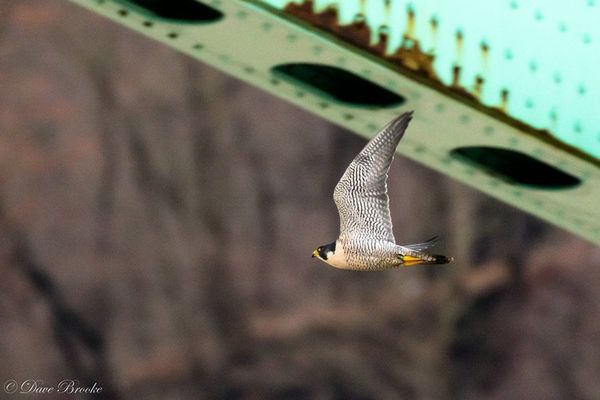
If you read my article about the Tarentum Peregrines On Ice last Sunday, you learned that Dave Brooke’s photos from Friday January 12 identified one of them as black/green 48/BR, banded at the Westinghouse Bridge in 2014. That band size would typically mean it’s a female peregrine but we learned this week that the bird is male. It was a group effort.
On Monday Art McMorris, PGC‘s Peregrine Coordinator, emailed us with news that, though the band is size 7A (for females), 48/BR was banded as “sex uncertain.”
“The bird’s weight was 660 g. and the measurements on its rectrices indicated an age of 23 days. That would indicate male, but the tarsus (leg) was snug in the size 6 (male) leg gauge, so that would indicate female. … To be safe, size 7A bands were used.”
Dave Brooke sent a few more photos including this super-zoomed version showing both of 48/BR’s bands.
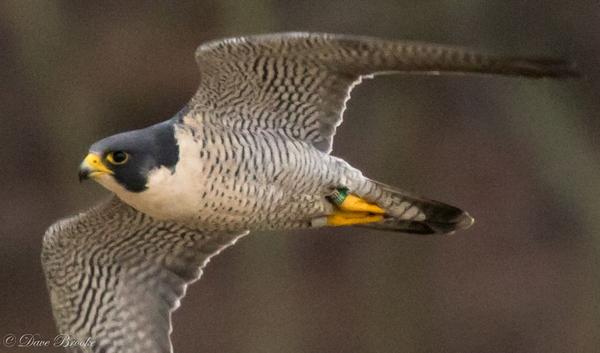
I looked at this photo and thought, “Hmmm.” This bird has a white forehead above its beak which, in my limited experience, is a male trait. And it’s choosing to nest a very short distance from where it hatched. Definitely a male trait. So I looked harder at all the other photos.
Males are 1/3 smaller than females. With both birds on the ice I could see that the bird on the left is smaller. Smaller = male.
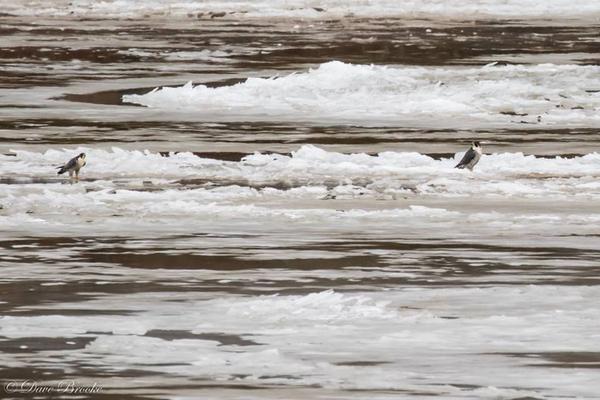
Which bird flew?
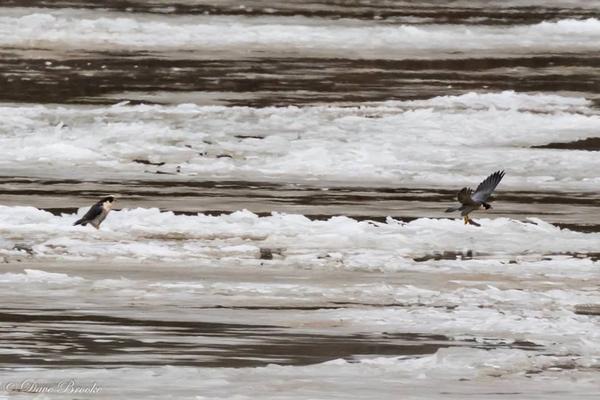
I compared the icy surroundings of the larger right-hand bird in photo#1 to the surroundings of the stationary bird in photo#2. This two-picture slideshow shows her surroundings don’t change. The larger bird (female) stayed on the ice
After he flew the bird remaining on ice looked like this. She’s large and bulky, a female trait.
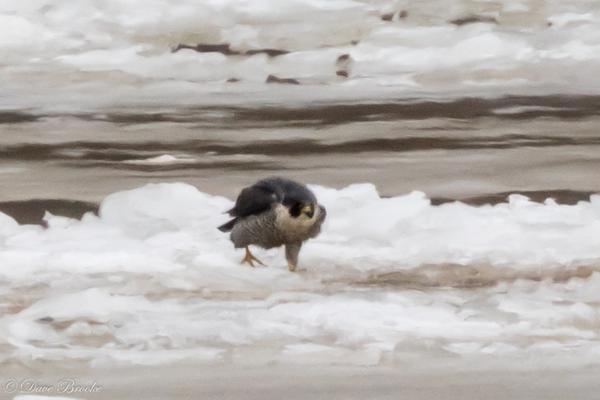
Did the flying bird come past Dave and show 48/BR on its leg? Dave said yes. So 48/BR is the smaller bird = male. But size is tricky. This still wasn’t enough evidence for me.
Yesterday Rob Protz emailed us with some history from the Tarentum Bridge: A banded juvenile-plumage male showed up in spring of 2015.
“The banded juvenile plumage male which showed up in Tarentum was first photographed by Steve Gosser on May 9, 2015, so the timing fits as a 2014 fledgling would still be in juvie plumage in spring of it’s second year. No juv plumage falcons have been seen (positively) since late summer of 2015.”
And then I looked at the fourth photo that Dave sent: a peregrine with lots of dots on its breast, perched on the bridge.
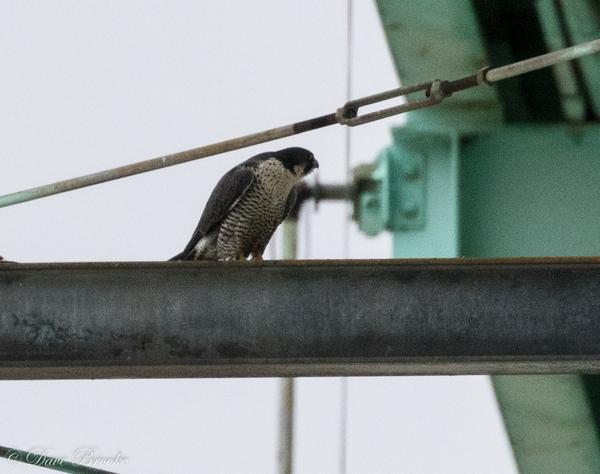
This bird is clearly not 48/BR because he has a clear breast. This is his mate.
Last spring Steve Gosser photographed a pair mating at the Tarentum Bridge (below, cropped close). Notice that the male (in flight) is banded. The female is unbanded with a dotted breast!

So 48/BR is male and is reflected as such in Art’s documentation.
Never a dull moment with peregrine falcons.
p.s. We may have seen this unbanded, dotted-breast female at Pitt last year on March 16. She flew back to Tarentum to mate.
(all photos by Dave Brooke except for the mating peregrines photo by Steve Gosser)
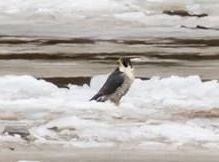
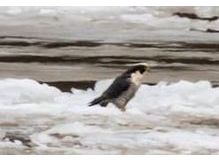
Good detective work Kate!
GREAT deduction work!!!! Wow! Thanks……